“As if you don’t already eat healthy enough as a raw foodist, now optimal food combinations should also be taken into account. That’s going too far for me, all enjoyment is gone, intuitive eating is out of the question,” could be the objection of a newcomer.
Is this objection justified?
Here is the necessary sensitivity for themselves required. For a motivated raw food newcomer, this topic can mean too much of a good thing, on the other hand, the optimal combination of foods can be a blessing for someone with digestive problems!
The art of balance
We see the topic of “optimal food combinations” as a fine balancing act between a healthy diet that entails real well-being and an overly intense fixation on healthy food, which can take on pathological traits.
Optimal nutrition thus requires a balance between professionally based principles and individual nutrition, for which a good body feeling is important.
♦
And maybe you already know our guiding principle:
Become your own expert and find “Your Nutrition”
With this in mind, we will look at the topic of “Optimal Food Combinations” in detail below:
Where is the end of healthy, healthier, even healthier?
Everyone who loves to eat healthy should also always ask themselves honestly why he do it: „What is actually the reason, why I still want to eat healthier?“
- I notice that it does me good.
- My goal is vitality, joy, well-being and sustainability
- I love to do it differently from the others.
- I am afraid of getting sick.
- I feel special when I eat better, healthier and more sustainably than the others.
- Among like-minded people, we encourage each other and spur each other on to ever stricter eating rules..
It is exciting to ask yourself these questions and discover the truth behind your intentions. After all, in all of this, the effect on personal well-being should be considered and a certain informality should be maintained.
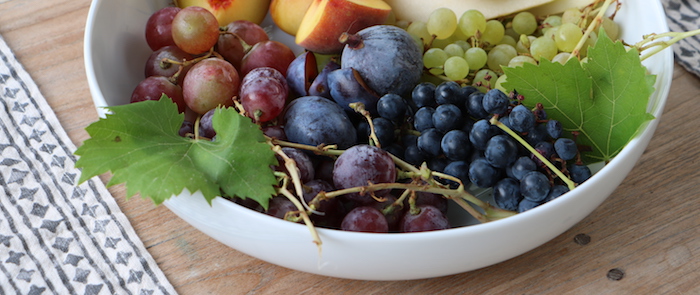
Orthorexia nervosa
The term “orthorexia nervosa” was first coined in 1997 by the American physician Steven Bratman (1). He took up the topic as a result of his own experiences, when he noticed that at some point he only ate vegetables from his own cultivation, which had to be harvested shortly before consumption, chewed each bite 50 times and did so as undisturbed as possible. Thus, one speaks of orthorexia when the preoccupation with the “right” diet takes on obsessive proportions.
The need to optimize everyday nutrition can then even have a counterproductive effect on a healthy, enjoyable and joyful life. Because if the choice of accepted meals becomes increasingly complicated, violations of self-imposed rules trigger tension and bad feelings, and happy togetherness is no longer possible, physical and psychological problems are pre-programmed over time.
Are you interested in gaining a comprehensive understanding of the health benefits of a plant-based diet? Download the curriculum for our Holistic Nutrition Coach training program.
Optimal food combinations sensibly applied
It is recommended to apply the rules for optimal food combinations in a framework of real personal added value.
Thus, their consideration can be valuable for people who
- have health problems, especially stomach and digestive problems
- want to optimize their nutrient intake and for all those
- who want to go deeper into the subject of optimal nutrition
Before we look at the rules of optimal food combinations, we will use a simple example to show that several scenarios can be imagined when they are taken into account:
- Since I gave up the fruit-seed combination in the morning, I no longer have flatulence.
- Since I heard that the fruit-seed combination is not compatible, I no longer like my muesli, which did me so much good for years.
- Since I eat only one kind of fruit in the morning, I gain strength and vitality.
- Since I eat fruits without the sprouted seed crunch in the morning, I have lost vitality.
In addition, it is important to keep in mind that even if we eat only one food at a meal, digestive problems can occur if we
- eat too much of it
- cewing too little
- eat under stress
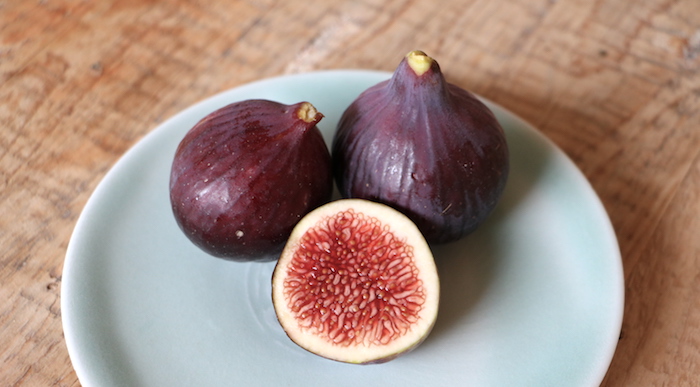
Optimal food combinations – background
The core message of optimal food combinations is that each food group – fruits, vegetables, nuts, seeds, etc. – requires very specific digestive enzymes and is digested at different rates. The topic was described in particular by Harvey and Marilyn Diamond in their book “Fit for Life” (2).
If different foods are eaten at once, which take different amounts of time to digest and require different enzymes, the body is unable to provide all the necessary enzymes at the same time. The digestive system can then become unbalanced, nutrients cannot be broken down optimally and/or the food mush begins to ferment. This can lead to a whole range of digestive disorders, from malaise, belching, heartburn, flatulence to abdominal pain. As harmless as these symptoms may seem, they can lead to other problems, such as compromised gut flora, allergies or poor nutrient absorption.
Good options are foods rich in water and the mono meal, they have a relieving effect on the digestive system. If the individual foods of mixed meals are eaten in the right order, they can also be digested optimally and the nutrients absorbed in the best possible way.
Dr. Gabriel Cousens puts this approach into perspective
Dr. Gabriel Cousens is an American physician and multiple book author. In his books he conveys a comprehensive understanding of a type-appropriate raw vegan diet, incorporating Ayurvedic teachings. Among other things, he argues that our stomach is not just a sack in which enzymes compete with each other, but that there are two functionally separate stomach sections. He refers to the upper section as the food enzyme stomach, with a pH between 5 and 6, in which the fat-, protein- and carbohydrate-breaking enzymes contained in raw foods become active. Only in the lower part of the stomach, at a pH of 1.5 and 3, does protein digestion essentially take place.
Thus, in the food enzyme stomach, the enzymes found in saliva and food can do much of the digestive work. Each raw food contains a combination of the very enzymes needed to digest that product. For example, seeds, which are predominantly oils and proteins, contain sufficient amounts of lipases and proteases for fat and protein digestion, respectively. Amylases are rarely found in seeds because their carbohydrate content is too low.
Furthermore, it is important to consider the benefits of “pre-digested” foods, such as soaked or sprouted nuts and seeds. During soaking, complex carbohydrates are already broken down into simple sugars, oils into free fatty acids, and proteins into amino acids. In this form, the foods bring more enzymes and are much easier to digest; by the way, this also applies to fermented vegetables.
Dr. Gabriel Cousens’ experience also shows that people who are affected by pronounced fluctuations in blood sugar benefit from combining fruits with soaked nuts or seeds. If they eat only fruits in the morning, the blood sugar level gets out of balance, while it can be stabilized in combination with sprouted seeds.
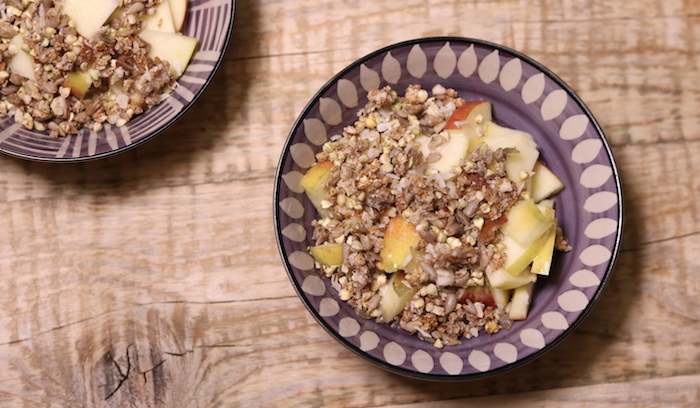
Ayurvedic contemplation
Ayurveda distinguishes between the three Dosha types Vata, Pita and Kapha, with each type having different digestive characteristics. Pita types have a strong digestive fire and can often tolerate different foods well, while Vata types have a more sensitive digestive system and Kapha types have a rather sluggish one. This individual disposition can explain why certain combination rules do not apply uniformly to everyone.
So, in any case, it is very valuable to know the food combination rules and to consider them as rough guidelines, but not to be confused by the highly complex theories and circulating opinions.
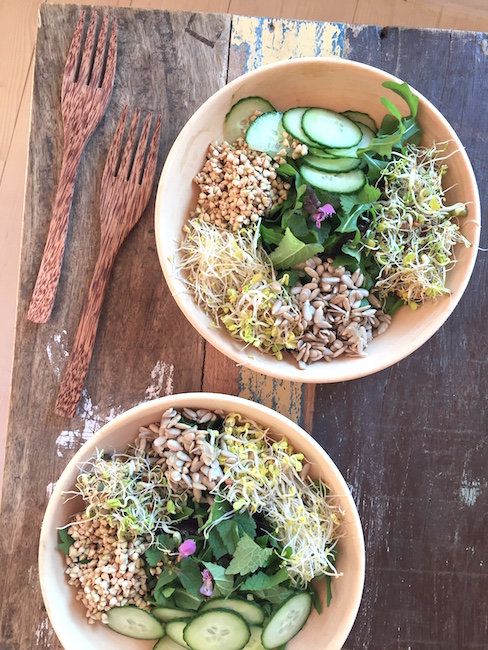
Optimal food combinations – the rules
Correct order
The most important two rules for the correct order are:
1. Drinking with food is inconvenient
Most people are used to drinking with their food. If you do this, the natural digestive juices in the stomach are diluted. The stomach acid can no longer work as effectively and food residues that were not previously broken down sufficiently can get into the small intestine.
It is best to drink 20 minutes before eating or 45 minutes after eating at the earliest in order to disturb the natural digestive processes of the stomach as little as possible.
2. The higher the water content of a food, the further it moves up in the order
Watermelon has the highest water content. It should be eaten on an empty stomach because it is digested very quickly. If it were eaten after a meal that takes longer to digest, it would lie on top and begin to ferment, which means that gases and alcohol would be produced.
In principle, it makes sense to eat fruit on an empty stomach. This means no fruit for dessert. Fruit for breakfast is ideal. Fruit digests very quickly in about 30 minutes. Salads are also digested relatively quickly and then make way for foods with a low water content. Longer digestion times are required for starchy foods, and even longer for protein-rich and fatty foods.
Unfavorable combinations in detail:
• Sweet fruits and fat
On the one hand, sweet fruit is digested much faster than fat, and on the other hand, fat impairs the utilization of fructose.
• Fruits/carbohydrates/sugar and protein
Sugary foods require an alkaline environment for their digestion; the breakdown already begins through saliva in the mouth and is essentially continued in the small intestine. Protein-containing foods need breaking down enzymes in an acidic environment. After that, the combination of fruits and nuts or dried fruits and nuts or seeds is rather difficult to digest.
• Fruits and starchy vegetables
Starchy vegetables are slower to digest and keep fruit in a jam.
• Sweet fruits and sour fruits
Sour fruits such as lemons, kiwis, and sour berries require different digestive enzymes than sweet ones. If there are several types of fruit at a meal, it is best to eat from sour to sweet.
The most important food combinations at a glance
Excursus Fruits:
Fruits should ideally be picked when ripe and be of regional and seasonal origin, then they have an alkalizing effect and are easy to digest. Unripe fruit, on the other hand, can have an acid-forming and caries-promoting effect.
Categories:
- Sour fruits: oranges, grapefruits, lemons, pineapples
- Semi-sweet fruits: apples, pears, plums, papaya, peaches
- Sweet fruits: bananas, figs, dates, mango
Conclusion:
With the overabundance of food choices we face today, knowing about optimal food combinations and how to adhere to them can actually initiate the healing we crave for people with gastrointestinal problems.
For everyone else, it is very valuable to understand the principles and integrate them into their daily diet at their own discretion. Even our ancestors probably did not eat according to rules, they acted intuitively.
The highest value should be given
- the joy of eating
- trust in one’s own intuition and
- the question: How do I feel after eating?
Would you like to join our unique, based on nutritional sciences and practice-oriented training program for gaining a high level of health?
We are more than happy to inform you about our training program on our website!

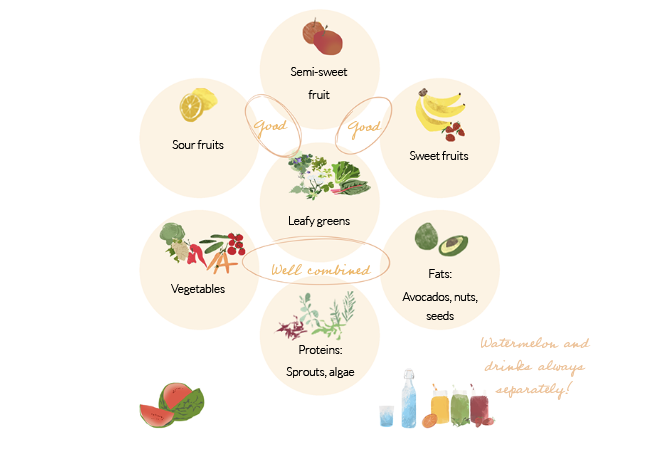



0 Comments